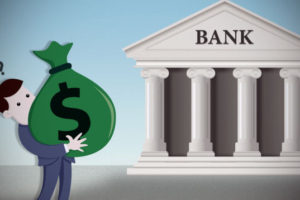While most people have heard the term compound interest, few of them really understand the meaning of the term and its implications for investment decisions. Compound interest is particularly relevant in long term investment decisions, such as saving for retirement, which makes it critical for the average investor to fully understand the term and its implications.
What Is Compound Interest?
Fortunately compound interest is no great financial mystery and does not require a PhD in mathematics to understand. Compound interest is merely the addition of any interest payments back on to the original sum and then the inclusion of these interest payments in any future interest calculations in addition to the original sum.
A quick example is always the best way to make sure a definition is understood. Imagine that you have $100 in the bank and your bank pays you 10% interest every year on the amount in your bank account. After one year the bank will deposit $10 dollars into your account as an interest payment.
If you choose to leave that interest payment in the account for the next year, your bank will calculate your next interest payment based on the original $100 and the additional $10 interest payment. Your total account value after the second year will be $121, with the extra $1 being the compounded interest that you received for leaving your first interest payment in with the original sum.
The Importance of Compound Interest
Now, $1 on $100 may not seem like much, but the effect of compound interest increases dramatically as you increase the number of compounding periods.
Take another example where that interest is compounded over 30 years, which is an excellent target for how long you should be saving for retirement. After 30 years at 10%, that original $100 is now worth $1,745 if you compound all the interest payments. Now contrast that with a non-compounding account over the same period where you would only end up with $400 and you can see how powerful the effect of compound interest can be.
The key to maximizing the effect of compound interest is to have as many compounding periods as possible, which allows the accumulated interest to be compounded over and over again. For example, an account which offers a monthly interest payment of 1% is superior to an account that offers an annual interest payment of 12%, and this effect becomes increasingly pronounced over shorter and shorter compounding periods.
Compound Interest and Retirement Saving
Most people who are saving for their retirement will hopefully not be using a simple bank account, yet the same principles of compound interest still apply. By immediately reinvesting any dividends from stocks and interest payments from bonds, investors are able to maximize the impact of compound interest on their retirement savings.
It can be tempting to try to “time the market” or otherwise hold cash as you manage your retirement fund, but in general it is better to quickly reinvest gains so that they can receive the effect of compound interest.
In our original example the effect of compound interest over 30 years was a difference of over 400%, which makes compound interest a sure-fire way for investors to achieve excellent long-term returns on their retirement savings and makes the small potential gains from holding cash seem negligible and unworthy of the risk and effort.



